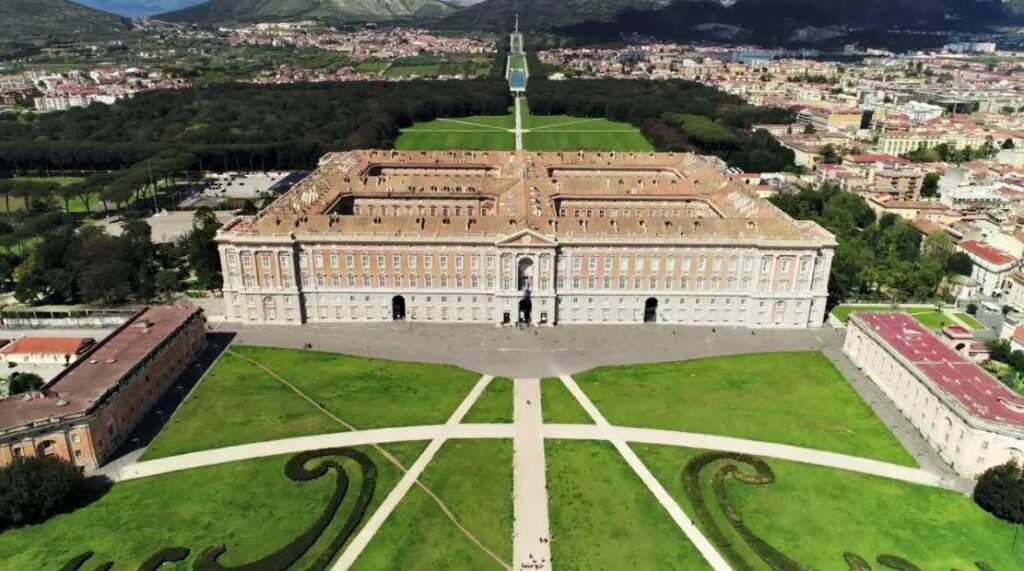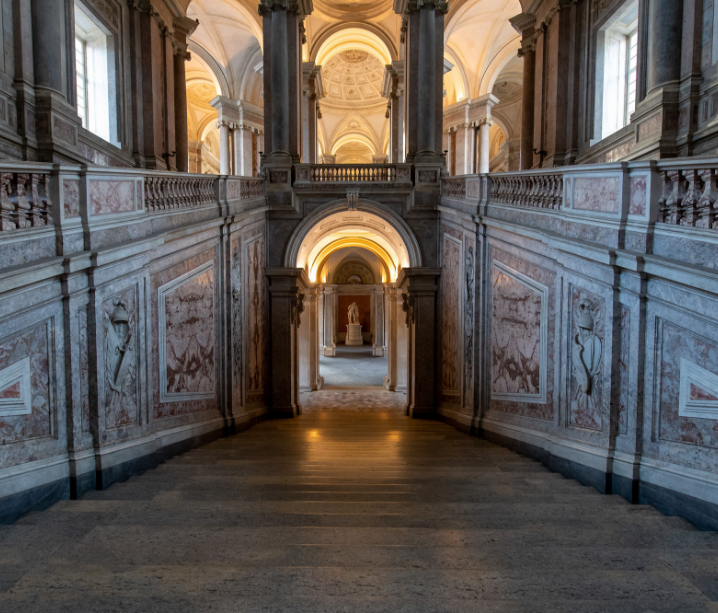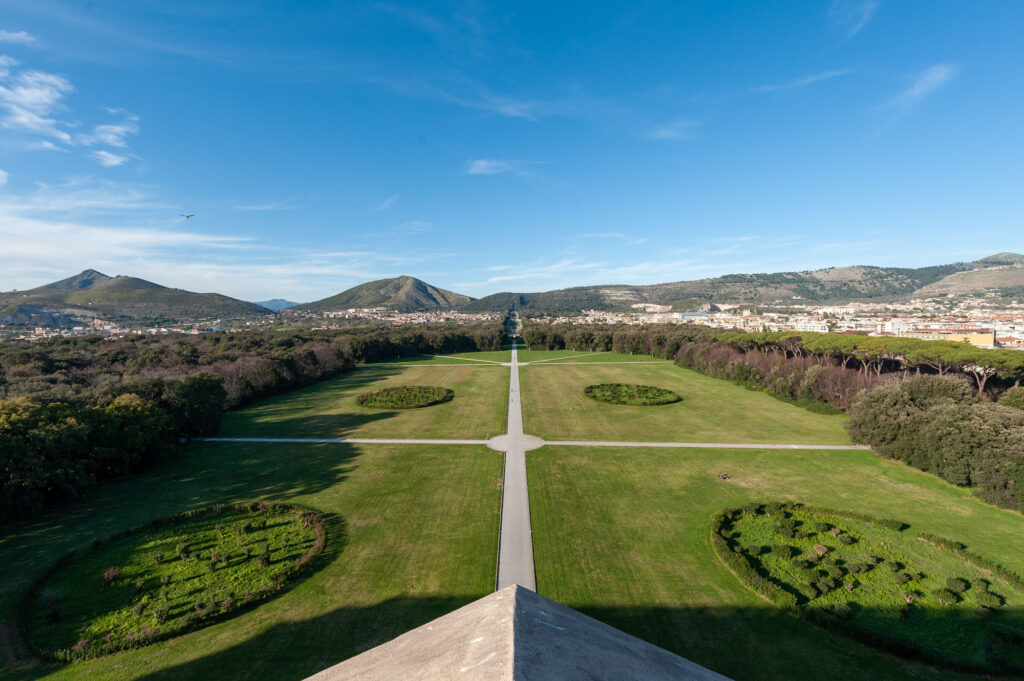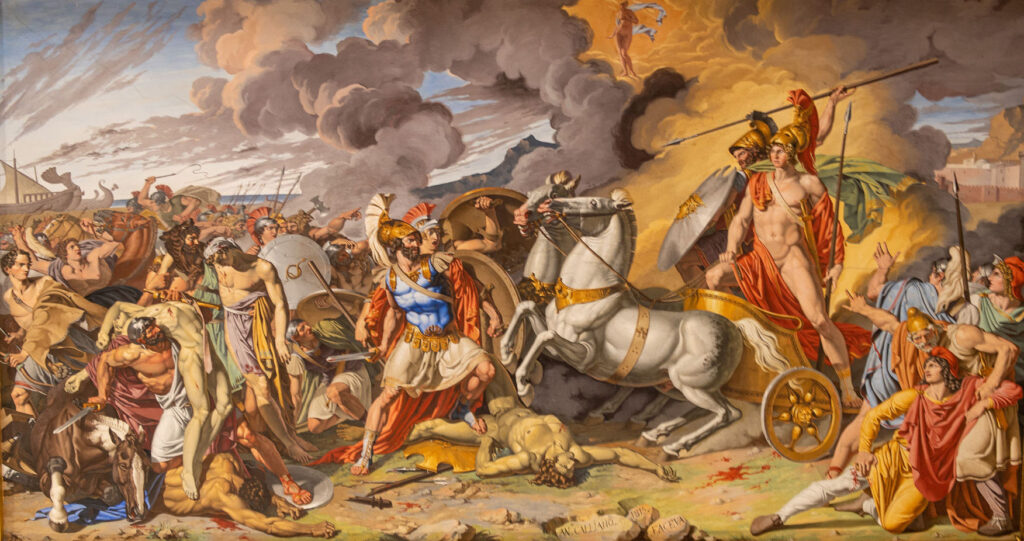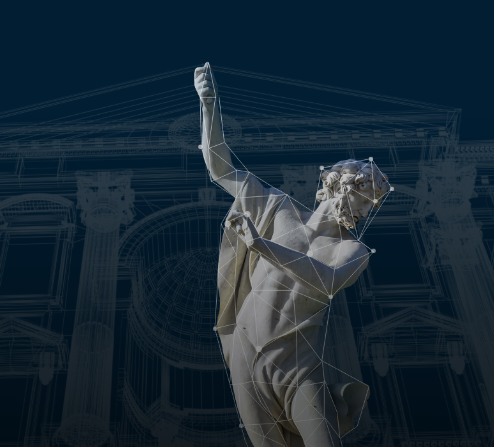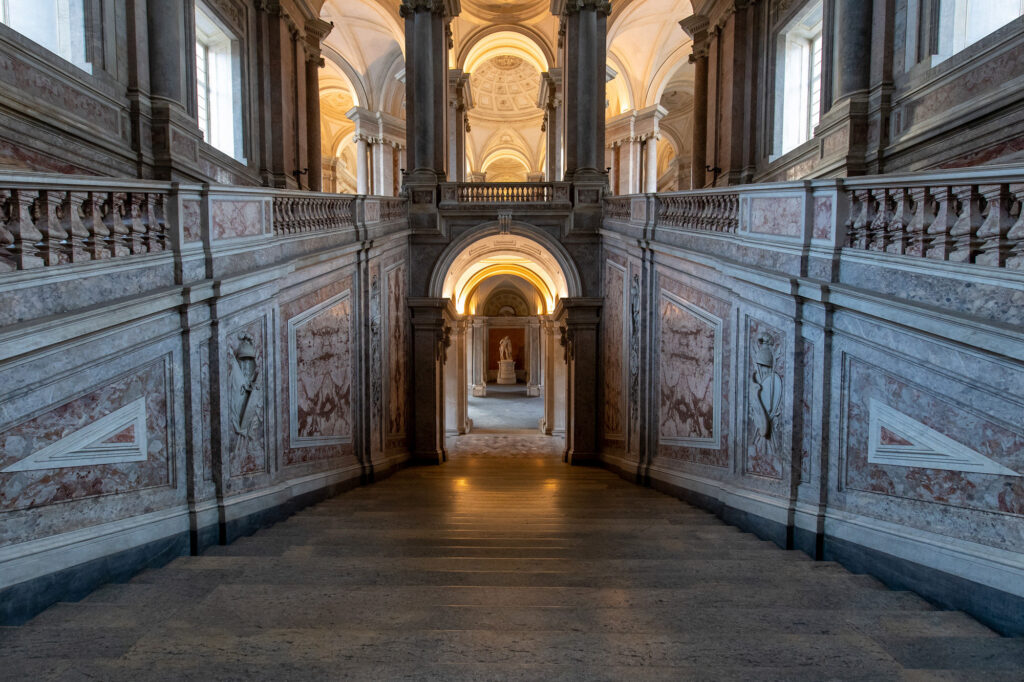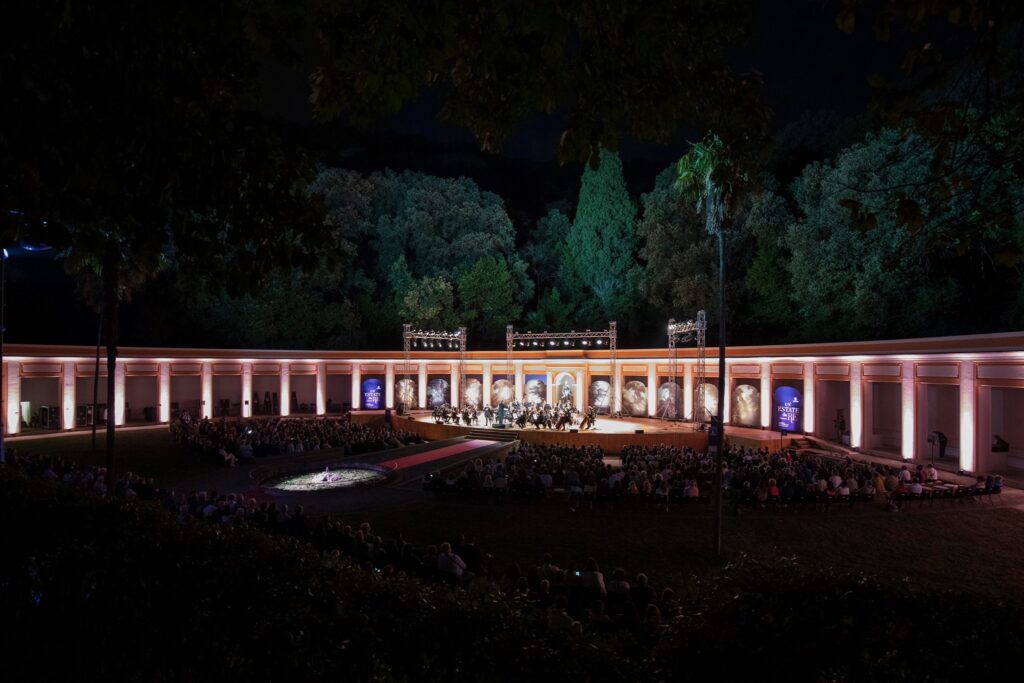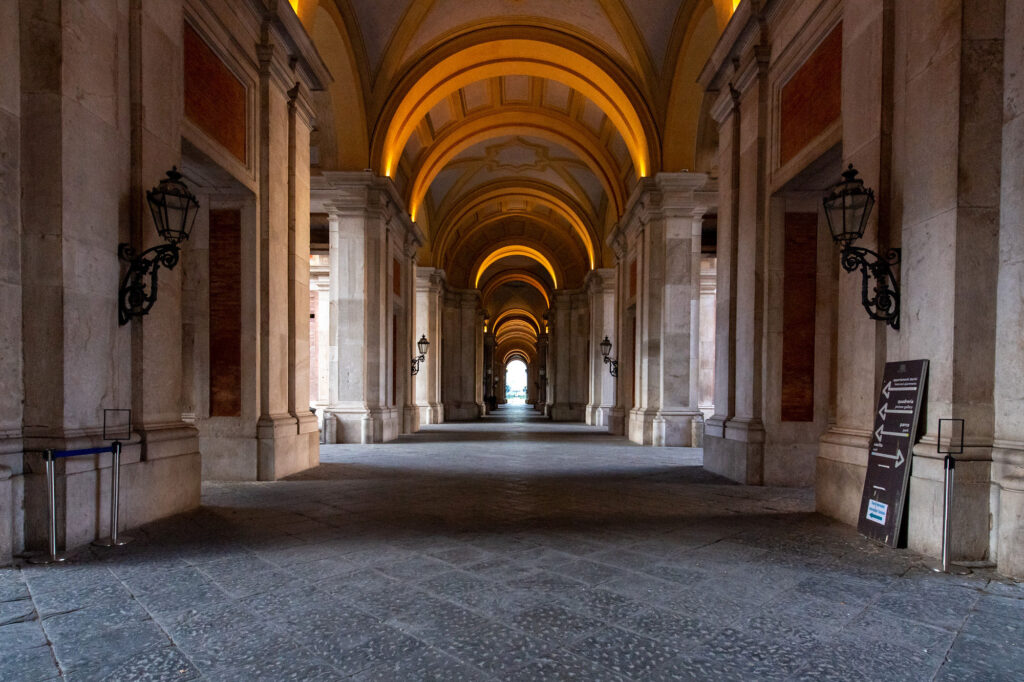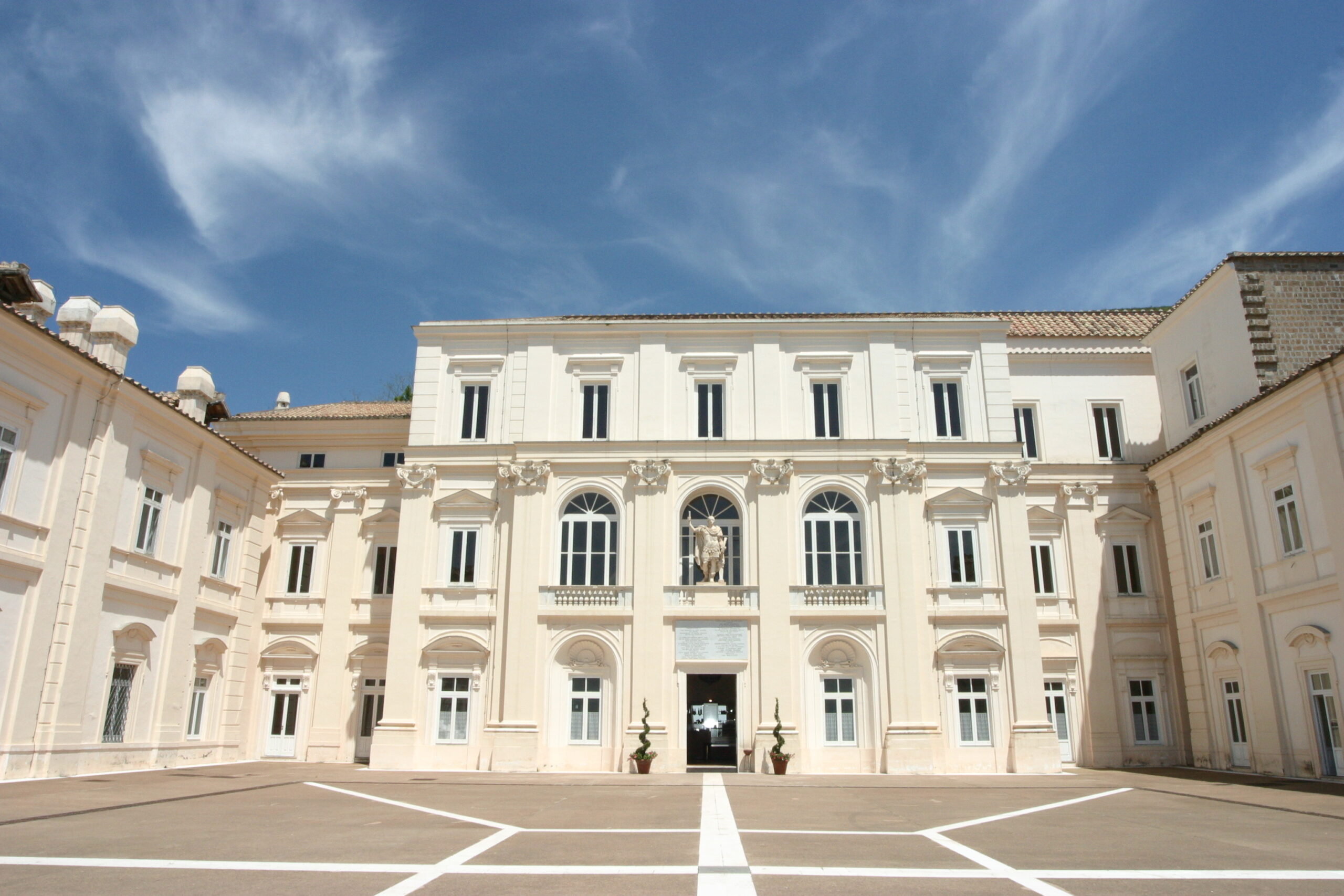A royal manufacturing hub
San Leucio Belvedere stands on the homonymous hill behind the Royal Palace of Caserta, on the land that Charles of Bourbon bought in 1750 from the Caetani of Sermoneta, feudal lords of Caserta. Part of the “Royal Delights”, San Leucio is favoured by Ferdinand IV for hunting, one of his favorite activities. In 1773 the king commissioned the construction of a structure intended to house him during hunting trips, the “Vecchio Casino”, soon abandoned after the death of the heir to the throne Carlo Tito in favour of another building. Between 1776 and 1778 Ferdinand IV entrusted the architect Francesco Collecini with the restoration of the “Casino di Belvedere”, built at the beginning of the seventeenth century by the Acquavivas, princes of Caserta. The Belvedere was enlarged and decorated by 1786. In the meantime, in 1778 the king decided to use the structure for the manufacturing and processing of silk. The Royal Colony of San Leucio is born, a manufacturing centre with housing and schools for workers.
 Find out more
Find out more
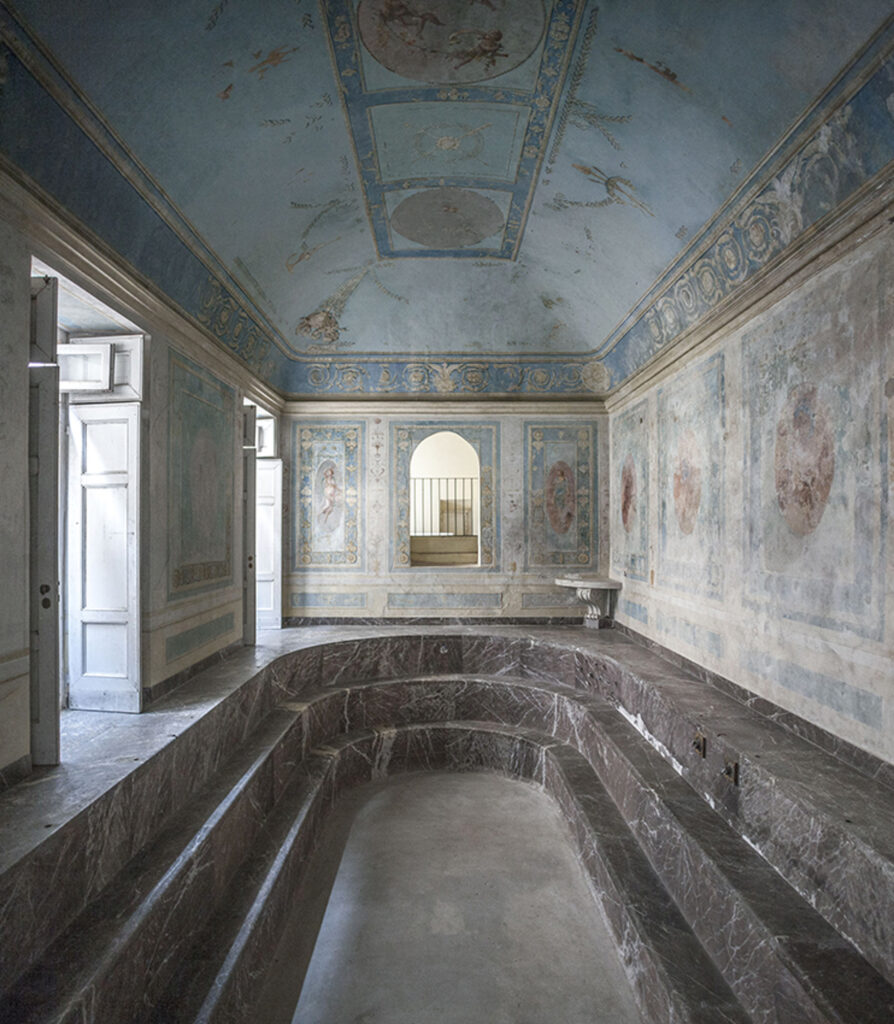
A Heritage For Humanity
The San Leucio Belvedere was included in the World Heritage List together with the Royal Palace of Caserta and the Caroline Aqueduct in 1997. The three works are closely linked to each other and testify to the far-sightedness of a project with a clear Enlightenment imprint. All the productive activities carried out at the Colony of San Leucio were made possible thanks to the aqueduct. A branch detached from the main conduit before it reached the Royal Park of the Royal Palace of Caserta lets the waters to return to fill the Peschiera tank after being used by the silk mills.



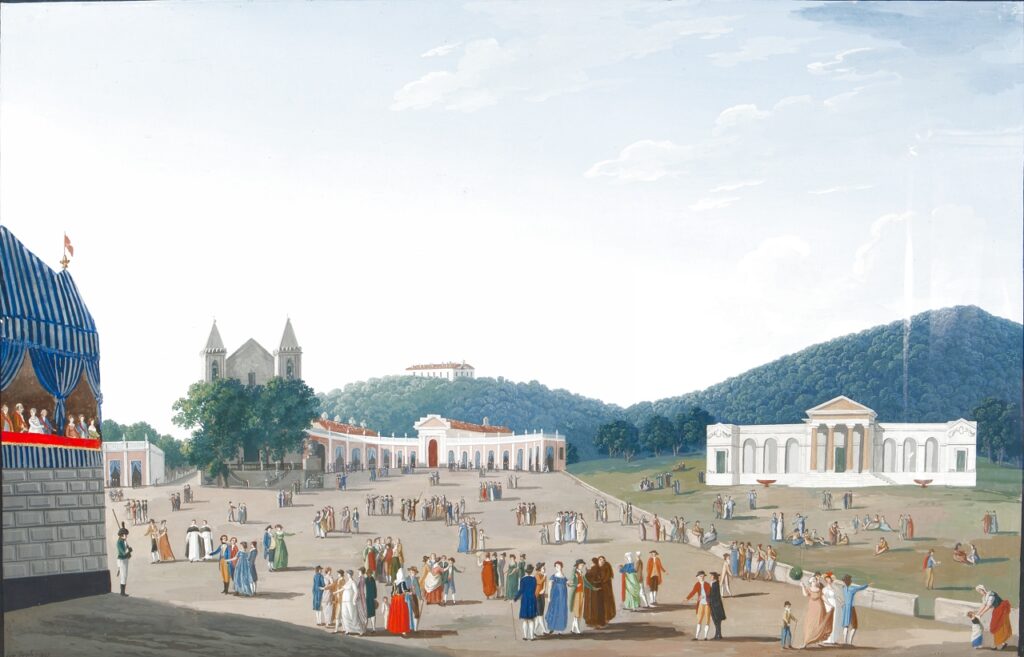
The Leucian Law Codes
In 1789 Ferdinand IV regulated the Colony of San Leucio with the promulgation of the Leucian laws. The structuring of the colony – including the regulation code – has prompted scholars to see it as an example of ante-litteram socialism. Some provisions, such as equal rights between males and females, the prescription of uniformity of clothing and the abolition of dowry, make the San Leucio Complex a testimony of the idealistic principles that characterize the vision of the Bourbons.



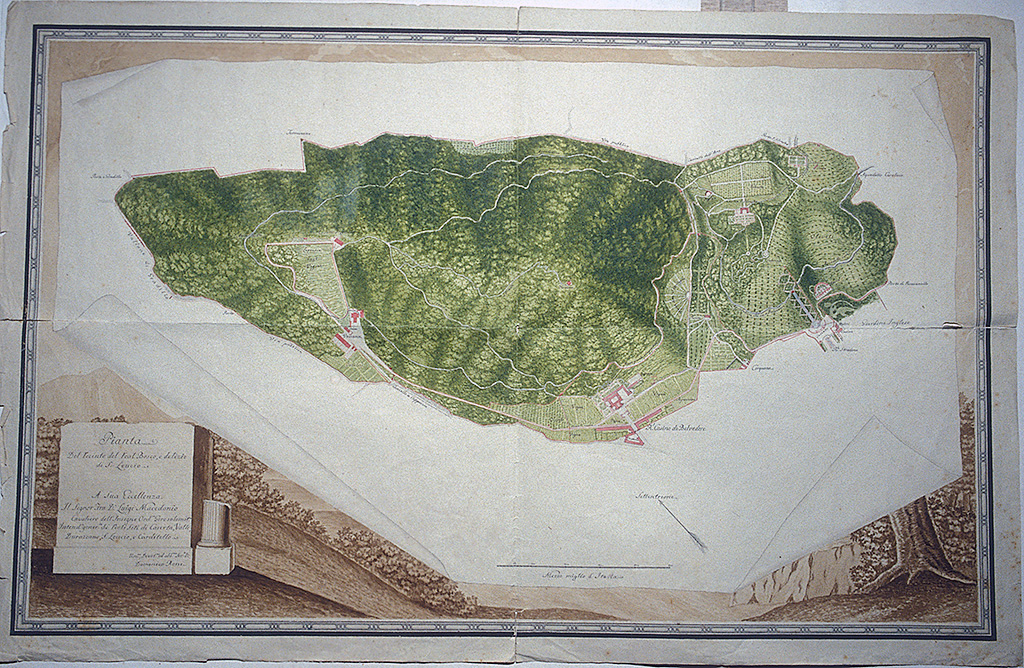
Ferdinandople
Between 1789 and 1799 Ferdinand IV decided to expand the Village of San Leucio and name it Ferdinandopole. Its design is entrusted to Francesco Collecini, the same architect who was responsible for the renovation of the Acquaviva Casino. Collecini designs a city with a circular layout, developed around a square located on an axis with the San Leucio complex. Due to the French occupation, Ferdinandopole will never see its realization.



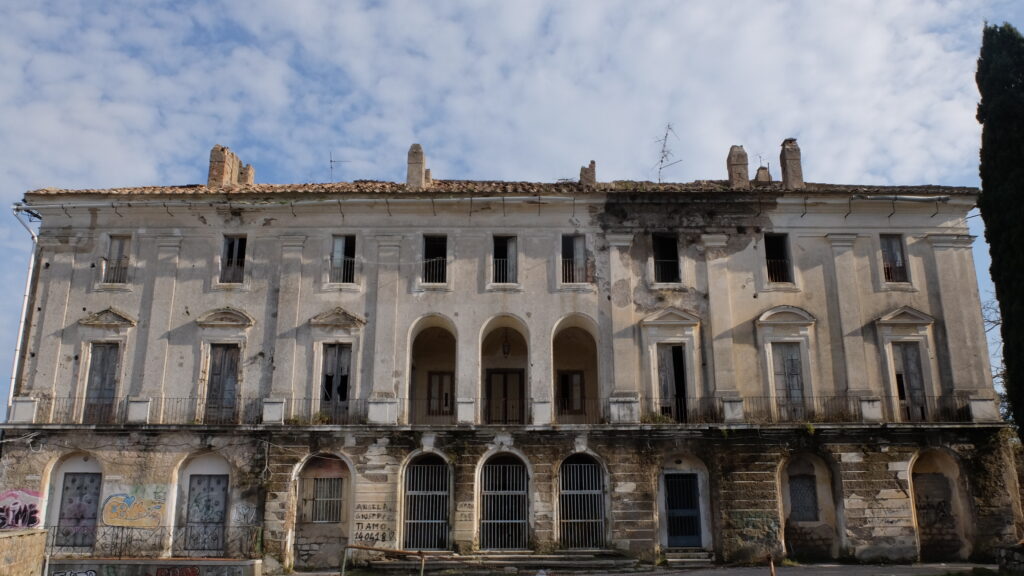
Vaccheria
The Vaccheria district is a Bourbon site located about 2 kilometers from San Leucio, at the foot of the “Vecchio Casino” (old Casino). It owes its name to its intended use: King Ferdinand IV of Bourbon established facilities dedicated to the breeding of Sardinian cows and “canetterie” (kennels) for his hunting dogs. In the main square stands the Church of Santa Maria delle Grazie, built between 1799 and 1805 under the direction of Francesco Collecini and equipped with a facade that anticipates the development of the neo-Gothic style in Naples by almost thirty years.







